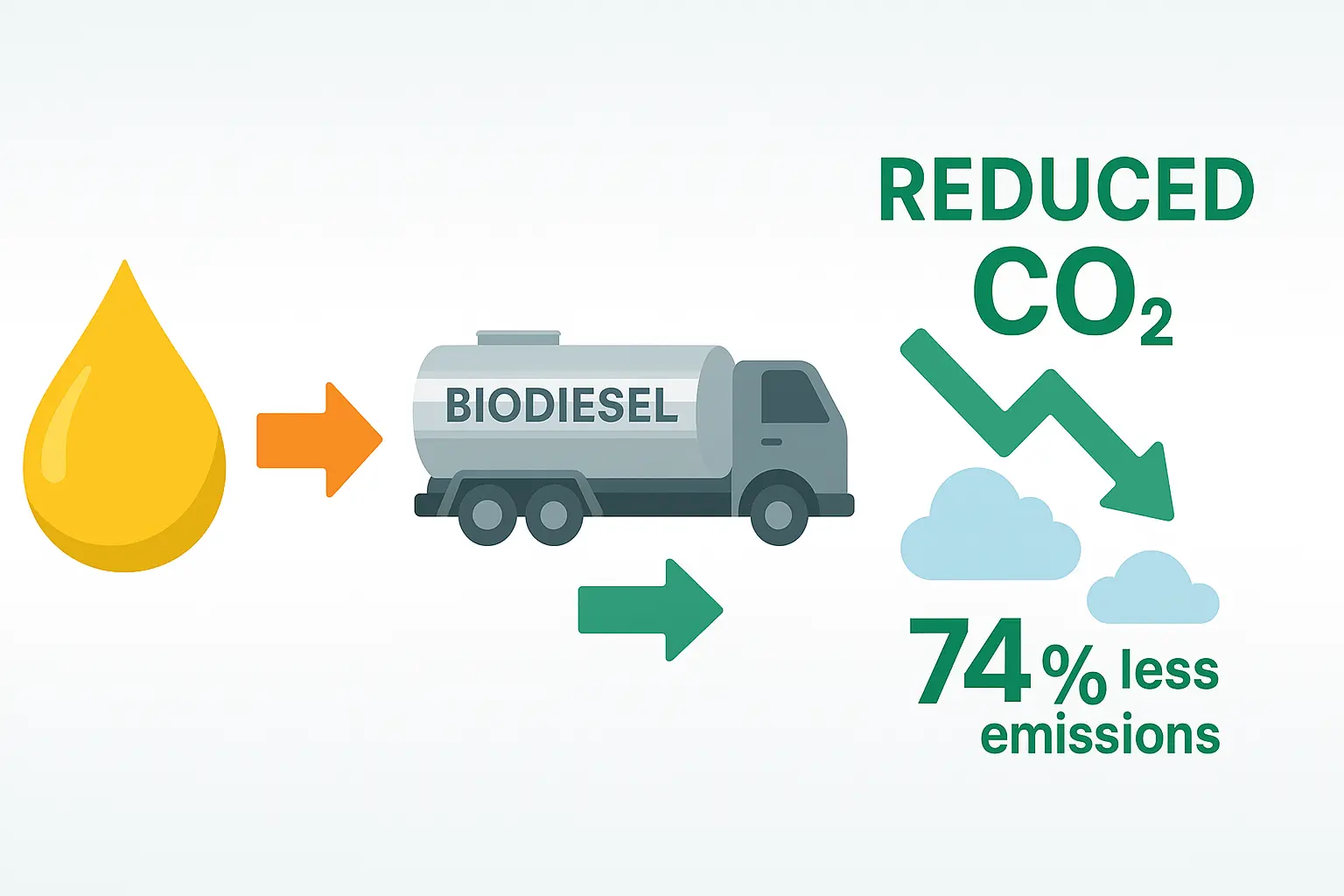Table of Contents
Why the 10 Gallon Mark Matters
Ten gallons is the line where U.S. regulations pivot from “household drop off” to “commercial generator.” Municipal facilities typically cap residential deliveries at or below this volume; anything more must move under state oil hauler rules and EPA Part 279 “used oil management standards.” Crossing the threshold also invokes local fire code storage provisions; NFPA 30 flags indoor cooking oil systems above 60 gallons for secondary containment and spill control hardware. In practice, insurers and health departments read the same playbook: once you’re beyond ten gallons, they expect professional collection records, closed loop recycling, and grease interceptor maintenance logs. Knowing this cutoff helps you budget, avoid fines, and start viewing oil as a regulated commodity instead of a messy by product.
Verify and Grade Your Oil Before Pickup
Not every batch is equal. A quick “clarity and contaminants” check lets you decide whether the oil can be re used, sold as “yellow grease,” or must travel as contaminated waste. Strain out food solids, test moisture with a fry oil meter, and log any soap, water, or sanitizer intrusion; if halogens exceed 1,000 ppm your hauler may need a hazardous waste manifest. Keeping a simple spreadsheet of test dates, volumes, and free fatty acid (FFA) percentages makes EPA audits painless and can even win you higher rebate pricing from biodiesel producers that pay bonuses for cleaner feedstock.

Stage It Safely: Containers, Location & NFPA 30 Compliance
Store oil in dedicated, food grade HDPE drums or the square caddies and 140 gallon tanks most haulers supply at no charge. Place them on level concrete, away from floor drains, and install spill pallets or built in secondary containment to catch the 110% worst case volume. Above 60 gallons indoors, NFPA 30 requires a self closing fill port, a fire rated enclosure, and signage reading “Cooking Oil, Combustible.” Keep lids latched; grease theft is real, and unlocked totes are easy targets. For outdoor setups, choose locking 300 gallon covered tanks that withstand UV and pests while meeting municipal storm water rules. These precautions protect staff, cut insurance claims, and demonstrate due diligence to health inspectors.
| Common Container | Capacity (gal) |
|---|---|
| Black steel drum | 55 |
| Square caddy on wheels | 70 |
| Rectangular tote with lid | 140 |
| Large automated tank | 300 |
Choose a Licensed Recycler: Ask These Five Questions
A reputable hauler is more than a pump truck driver; they’re your compliance partner. When vetting providers, confirm (1) state transporter license number, (2) proof of $1 M environmental liability insurance, (3) frequency options: weekly, bi weekly, or “on demand when tank sensor hits 80%,” (4) written chain of custody receipts with EPA ID, and (5) rebate schedule tied to market “yellow grease” spot prices. Leading firms like Grease Connections supply smart sensors that ping you and the driver, slashing spills and emergency calls. Capture these services in a signed service agreement that spells out response time for overflow incidents and cleaning of any external residue around the valve.
Day of Pickup Protocol: Keep It Clean, Keep It Legal
On collection day, verify the truck ID matches your manifest, snap a photo of meter readings, and file the e receipt in your digital log. Have spill kits, absorbent socks, pads, and a 5 gallon sealable bucket, within ten feet; most fire codes require them. If oil splashes, dam the flow with absorbent, bag the waste, and label it “Oily Solids, Non Hazardous” for your trash contractor. After pumping, inspect gaskets and cam locks for wear, then double check fill level sensors are reset. A two minute walkthrough protects you from fines and keeps your insurance carrier happy during surprise audits.
Close the Loop: Turn Grease Into Goodwill and Profit
Once recycled, your oil becomes biodiesel, livestock feed additive, or industrial lubricant. Ask your hauler for quarterly diversion certificates that state total gallons and CO₂ equivalent savings; these reports bolster ESG narratives and satisfy corporate sustainability scorecards. Publicize the numbers on your menu, website, and investor deck; restaurants often see a 3 to 5% consumer trust lift when they highlight waste to fuel partnerships. Some haulers now pay 20 to 30 cents per gallon rebates for clean yellow grease; over a year, a busy kitchen can offset part of its fryer oil expense. In short, managing big volume oil responsibly isn’t just about staying legal; it’s a branding and revenue opportunity that sets you apart from competitors still treating grease as garbage.









